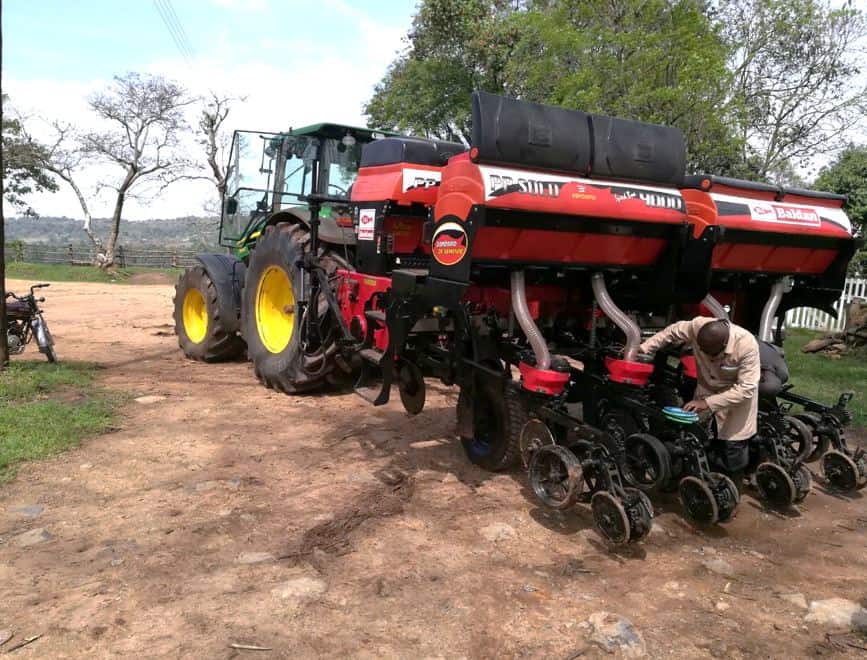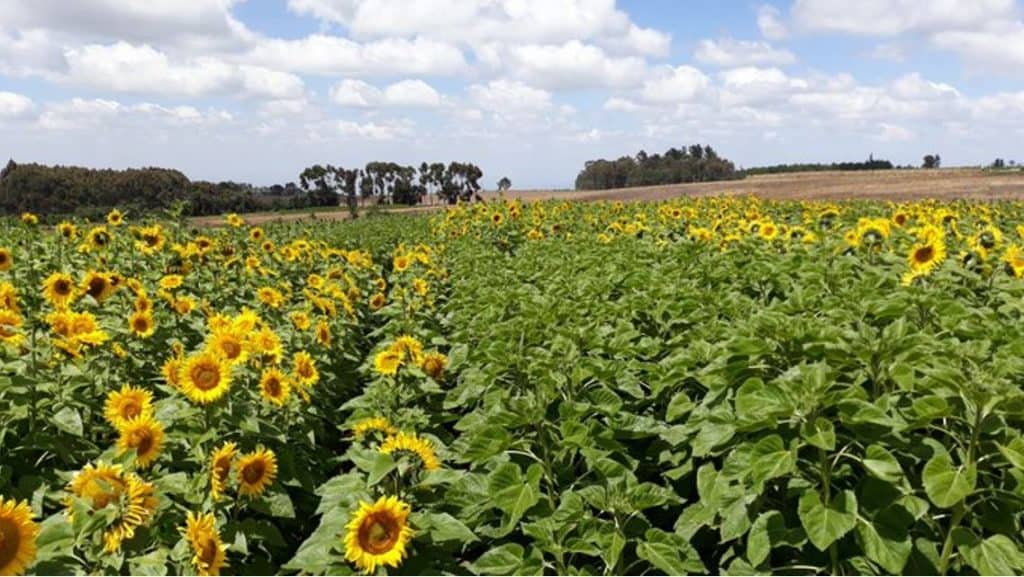
Knowing your farm cost of production is absolutely crucial for any farming business, and it is an integral part of the advice we give the farmers that we work with at Cropnuts.
So every year we take a look through the actual farm input costs of growing different cereal crops (maize wheat & barley) and the spread of yields that are obtained, to help budget, plan and optimize the inputs you give the crop.
As a reminder, we look at ‘variable costs’ – the costs which can be specifically allocated to a single crop including seeds, sprays, fertiliser. This allows a fair and meaningful comparison between farms that might otherwise range from 10 acres to 10,000 acres, and have very different overhead cost structures from machinery, finance and labour etc.
Looking at the major cereal crops of Maize, Wheat and Barley, I can see that last year the average spend across our clients actually declined for maize slightly. On further analysis these savings were – often – from less insecticide spend resulting from lower Fall Armyworm pressure.

Seed costs, however, will likely increase going forward on our clients farms, first because of the move towards higher seed rates but secondly because of our preference to varieties that have a slightly higher price.
Wheat cost of production/input costs were fairly static, but fertilizer costs rose owing to topdressing. We feel this is essential in order to achieve higher protein in some varieties, but this year has seen bushel weight dominating the discussion.
In barley, we are actually seeing a slight reduction in cost of production/input costs, as we have actually reduced topdressing rates, and new variety Planet actually requires less fungicide than the likes of Cocktail and Quench.
| Shillings per hectare | Maize | Wheat | Barley |
| Seed and treatment | 4,750 | 5,800 | 5,600 |
| Fertiliser | 25,900 | 14,400 | 13,975 |
| Herbicides | 8,600 | 6,250 | 6,250 |
| Fungicides | 5,400 | 12,150 | 6,600 |
| Insecticides and other | 7,200 | 2,200 | 2,200 |
| Total variable costs | 51,850 | 40,800 | 34,625 |
What makes interesting reading is separating out the lowest and highest expenditure wheat crops. In one low input system I came across, the grower was spending just one third of the amount of one of one of our higher input clients.
On face value this seems a lot, but the extra 30,000 Ksh spent by the high input grower only equates to an extra ton per hectare of yield, or 4.4 bags per acre.
| Shillings per hectare | Low input wheat | High input wheat |
| Seed and treatment | 3,500 | 5,800 |
| Fertiliser | 4,500 | 15,500 |
| Herbicides | 3,000 | 8,350 |
| Fungicides | 3,450 | 13,400 |
| Insecticides and other | 700 | 2,200 |
| Total variable costs | 15,150 | 45,250 |
This observation is actually not as inane as it sounds; in some areas I am of the strong opinion that if a grower can spend a lot less for one season, still make money, but have 30,000 Ksh cash to invest in Lime, it opens up a substantial opportunity for other crops such as Canola and Peas in the rotation.
This may seem contrary to our best agronomic knowledge spending exactly what the crop needs now, but it is crucial as an agronomist to realise that so much of what we do is limited by cash flow, and that the medium term benefits of correcting soil then putting a rotation in will reap substantial rewards.
| Peas | Canola | Sunflowers | Chickpeas | |
| Seed and treatment | 17,500 | 8,000 | 250 | 5,000 |
| Fertilizer | 8,000 | 14,400 | 12,025 | 2,400 |
| Herbicides | 13,800 | 6,700 | 12,400 | 9,300 |
| Fungicides | 17,000 | 6,700 | 2,000 | 4,000 |
| Insecticides and other | 2,500 | 3,100 | 400 | 2,700 |
| Total variable costs | 58,800 | 38,900 | 27,075 | 23,400 |
Among the break crop options, canola still looks a solid crop to grow. Even at a modest yield of 2 t/ha the crop can return 50,000 Ksh before the farm overheads and rent, and there are growers now regularly achieving over 3 t/ha. Even for short tenure growers in places like Mau Narok, this is crop seriously worth considering.

Sunflowers are harder to justify – even at a price of 35 Ksh per kilo price, a typical yield of 1.5 t/ha they will struggle to return 25,000 Ksh per hectare to cover rent and overheads.
Peas can be far more profitable, but the yields can be highly variable. In a wet season you can harvest nothing; in a perfect season a 2.5 t/ha crop with good quality can give a return of 90,000 Ksh before rent and overheads.

I put my neck on the block a few weeks ago and said that Fall Armyworm has not turned out to be the serious threat that we once expected, and that this season will be perfectly manageable. It is still very much present, and as the earliest crops reach 4 collar stage there are larvae in some crops. But don’t panic.
We know from the past few years’ experience that early sown crops tend to be less affected, and later sown crops much more affected as adults build up and there are simply more eggs being laid.
We will see prominent damage, but this is a pest that is perfectly manageable with some simple control measures.
Good crop monitoring at an early stage, walking fields thoroughly to pick up any hotspots, and spraying a good product either in the morning or evening will ensure minimal yield loss, even if there is a bit of cosmetic damage in the crop.

It is important to keep a sense of proportion, and we will be continuing our insecticide efficacy testing program this season to monitor shifts in control from any of the pesticides. But to put the menace in perspective our replicated field trial in Nakuru last year showed NO yield loss in the untreated plots compared three consecutive applications of either indoxacarb / emamectin / acephate / abamectin + chlorantraniliprole / pyriproxifen.
So keep an eye out and monitor crops closely, be prepared to spray but don’t lose sleep!
The unexpected rain over the past few months has created some serious fallow weed challenges on many farms. Whilst it may be tempting to apply some heavy herbicide mixtures ahead of planting, it is important to remember the following crop intervals or ‘plantback’ periods which are there for your own protection to avoid crop damage.
For growers adding 1 litre/ha of a 72% 2,4-D amine with their glyphosate…
Barley – 3 days as a minimum, 5 to be safe
Wheat – in most cases 1 day, but 3 is safer, and do NOT apply pre emergence of the crop!
Maize – 7 days, no less. There has been a lot of work done in this crop so do not chance it. If apply 1.5 l/ha, 14 days before planting is sensible.
Peas or Beans – 10 for faba beans, 14 minimum for peas but 21 is safer in cooler areas.
Lupins – 21 days
Canola – 28 days, and don’t compromise on this!
Sunflowers – 14 days. If you are planting with a sweep tine on a wider row then 7 is fine in reality, but at your own risk.
Pls Note: There are some other useful herbicides approved in Kenya that can be added to glyphosate to improve control of specific weeds – speak to your agronomist to discuss.
Till next time,
Happy farming!
David,
About David

David Jones is the Broad Acre Specialist at Crop Nutrition Laboratory Services Ltd. (CROPNUTS). David has a keen interest in soils and no till farming systems where he has undertaken work looking into weed levels and changes in soil structure, and has extensive experience in field trials and in the development of precision farming techniques. In his spare time he enjoys playing rugby. Follow him on Twitter @Cropnuts_agron
Order our services and get to know how to improve your soil for better yeilds.